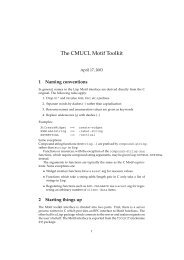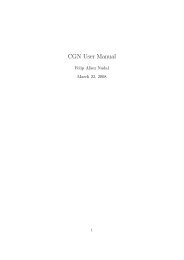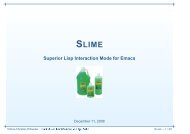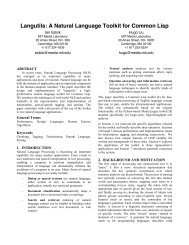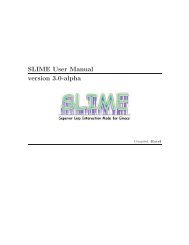SLIME User Manual - Common Lisp.net
SLIME User Manual - Common Lisp.net
SLIME User Manual - Common Lisp.net
- No tags were found...
You also want an ePaper? Increase the reach of your titles
YUMPU automatically turns print PDFs into web optimized ePapers that Google loves.
Chapter 6: Extras 16dgqslime-connection-list-make-defaultMake the connection at point the “default” connection. It will then be usedfor commands in slime-mode source buffers.slime-update-connection-listUpdate the connection list in the buffer.slime-temp-buffer-quitQuit the connection list (kill buffer, restore window configuration).6.3 Typeout framesA “typeout frame” is a special Emacs frame which is used instead of the echo area (minibuffer)to display messages from slime commands. 1 This is an optional feature. The advantageof a typeout frame over the echo area is that it can hold more text, it can be scrolled, andits contents don’t disappear when you press a key. All potentially long messages are sentto the typeout frame, such as argument lists, macro expansions, and so on.M-x slime-ensure-typeout-frameEnsure that a typeout frame exists, creating one if necessary.If the typeout frame is closed then the echo area will be used again as usual.To have a typeout frame created automatically at startup you can use the slimeconnected-hook:(add-hook ’slime-connected-hook ’slime-ensure-typeout-frame)1 The name “typeout frame” is intended to be consistent with historical usage. If we are using the terminappropriately, please set us straight.






